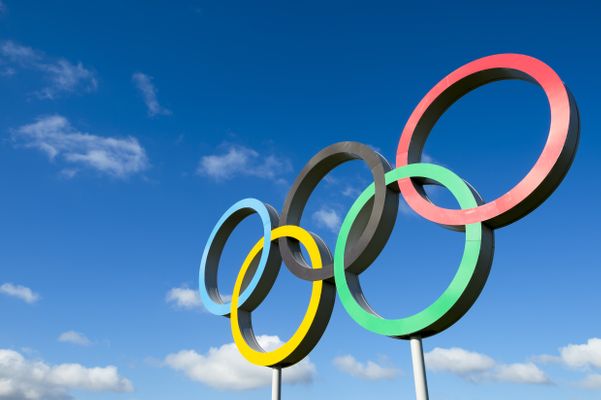5.4.1
Stratford
Queen Elizabeth Olympic Park - Stratford
Queen Elizabeth Olympic Park - Stratford
The Queen Elizabeth Olympic Park in east London (Stratford) was developed and constructed for the 2012 Olympic Games. The key features of the development are:


Olympic Park
Olympic Park
- An area of 350 hectares of abandoned and derelict land was converted into sports and residential facilities.
- There are 100 hectares of new green space, with 4,000 trees and 600,000 tonnes of soil cleaned (to remove contaminants like arsenic and ammonia).
- 3km of rivers and canals were cleaned and 230,000 cubic metres of contaminated groundwater was removed.


Housing
Housing
- The accommodation that was built for Olympic athletes in the Olympic Village was converted into new housing for 2,800 people.


Transport and infrastructure
Transport and infrastructure
- The rail, bus and cycle routes in Stratford were improved to cater for the volume of people visiting during the Olympics and for residents afterwards.
- A new rail station was built at Stratford International.


Retail
Retail
- A new Westfield shopping centre was constructed within walking distance of the Olympic Park and Olympic Stadium.


Sports facilities
Sports facilities
- The Olympic Stadium has become the London Stadium, which is home to West Ham Football Club.
- The London Aquatics Centre has become a public swimming pool.


Culture
Culture
- There are plans to build a lot of cultural buildings and experiences in Stratford. These include the Victoria & Albert East museum, Sadler's Wells East, which is a dance theatre and the London College of Fashion.
Stratford - Urban Regeneration
Stratford - Urban Regeneration
The redevelopment of Stratford illustrates many of the core principles of regeneration.


International impact
International impact
- The presence of many MNC retailers like Zara in the Westfield shopping centre illustrates the significance of global influences on places.
- Furthermore, the Olympic Park was primarily built initially to host the Olympics, which is a global competition. London probably only won the rights to host the 2012 Olympics because of good rail, underground and air transport links.


Regeneration strategies
Regeneration strategies
- Stratford has the hallmarks of all four major urban regeneration strategies:
- Sport-led regeneration is clear with the London Stadium, Aquatic Centre and Olympic Games.
- Tourism-led regeneration is evident because the Olympic Park hosted the Olympic Games.
- Retail-led regeneration is shown by the construction of a Westfield shopping centre nearby.
- Culture-led regeneration is shown by the establishment of museums like the Victoria & Albert Museum East nearby.


Win-win redevelopment
Win-win redevelopment
- Although, many stakeholders may have attachment and life experiences of the pre-development Stratford, regenerating derelict and unused land is likely to be less controversial than developing other areas.
1Tectonic Processes & Hazards
1.1Tectonic Processes & Hazards
1.2Natural Disasters
1.3Natural Disaster Case Studies
1.4Trends & Patterns
2Option 2A: Glaciated Landscapes & Change
2.1Glaciated Landscapes Over Time
2.2Periglacial Landscapes
2.3Glacial Processes
2.4Glacial Landforms
3Option 2B: Coastal Landscapes & Change
3.1Coastal Landscapes
3.2Coastal Erosion & Deposition
3.3Coastal Risks
4Globalisation
4.1Globalisation
4.2Negatives of Globalisation
4.3Global Shift
4.5Culture
4.6Measuring Development
5Option 4A: Regenerating Places
5.1Types of Economies
5.2Function of Places
5.3Regeneration
5.4Regeneration Case Studies
6Option 4B: Diverse Places
6.1Population Structure
6.2Past & Present Connections
6.3Urban & Rural Spaces
6.4Diversity
6.5Urban & Rural Case Studies
6.6Case Study - Tower Hamlets
6.7Case Study - Sturton-le-Steeple
7The Water Cycle & Water Insecurity (A2 only)
7.1Hydrological Processes Global to Local
7.2Influences on the Water Cycle
7.3Water Insecurity
8The Carbon Cycle & Energy Security (A2 only)
8.1The Carbon Cycle
8.2Energy Consumption
8.3Alternative Energy
8.4Growing Demand for Resources
9Superpowers (A2 only)
9.1Superpowers
9.2Hard & Soft Power
9.2.1Hard & Soft Power
9.2.2Emerging Powers - China Rivalry
9.2.3Emerging Powers - Chinese Sources of Power
9.2.4Emerging Powers - Brazil
9.2.5Emerging Powers - Russia
9.2.6Emerging Powers - India
9.2.7Theories of Development
9.2.8Power Case Studies: Chinese One Belt One Road
9.2.9Power Case Studies: Pakistan Nuclear Arms
9.2.10Power Case Studies: OPEC
9.3IGOs, TNCs & Alliances
10Option 8A: Health & Human Rights (A2 only)
10.1Human Development
10.2Role of Governments & IGOs
10.3Human Rights
10.4Interventions
11Option 8B: Migration & Identity (A2 only)
11.1Globalisation & Migration
11.2Consequences of Migration
11.3Nation States
11.4Responses to Global Migration
Jump to other topics
1Tectonic Processes & Hazards
1.1Tectonic Processes & Hazards
1.2Natural Disasters
1.3Natural Disaster Case Studies
1.4Trends & Patterns
2Option 2A: Glaciated Landscapes & Change
2.1Glaciated Landscapes Over Time
2.2Periglacial Landscapes
2.3Glacial Processes
2.4Glacial Landforms
3Option 2B: Coastal Landscapes & Change
3.1Coastal Landscapes
3.2Coastal Erosion & Deposition
3.3Coastal Risks
4Globalisation
4.1Globalisation
4.2Negatives of Globalisation
4.3Global Shift
4.5Culture
4.6Measuring Development
5Option 4A: Regenerating Places
5.1Types of Economies
5.2Function of Places
5.3Regeneration
5.4Regeneration Case Studies
6Option 4B: Diverse Places
6.1Population Structure
6.2Past & Present Connections
6.3Urban & Rural Spaces
6.4Diversity
6.5Urban & Rural Case Studies
6.6Case Study - Tower Hamlets
6.7Case Study - Sturton-le-Steeple
7The Water Cycle & Water Insecurity (A2 only)
7.1Hydrological Processes Global to Local
7.2Influences on the Water Cycle
7.3Water Insecurity
8The Carbon Cycle & Energy Security (A2 only)
8.1The Carbon Cycle
8.2Energy Consumption
8.3Alternative Energy
8.4Growing Demand for Resources
9Superpowers (A2 only)
9.1Superpowers
9.2Hard & Soft Power
9.2.1Hard & Soft Power
9.2.2Emerging Powers - China Rivalry
9.2.3Emerging Powers - Chinese Sources of Power
9.2.4Emerging Powers - Brazil
9.2.5Emerging Powers - Russia
9.2.6Emerging Powers - India
9.2.7Theories of Development
9.2.8Power Case Studies: Chinese One Belt One Road
9.2.9Power Case Studies: Pakistan Nuclear Arms
9.2.10Power Case Studies: OPEC
9.3IGOs, TNCs & Alliances
10Option 8A: Health & Human Rights (A2 only)
10.1Human Development
10.2Role of Governments & IGOs
10.3Human Rights
10.4Interventions
11Option 8B: Migration & Identity (A2 only)
11.1Globalisation & Migration
11.2Consequences of Migration
11.3Nation States
11.4Responses to Global Migration
Unlock your full potential with Seneca Premium
Unlimited access to 10,000+ open-ended exam questions
Mini-mock exams based on your study history
Unlock 800+ premium courses & e-books